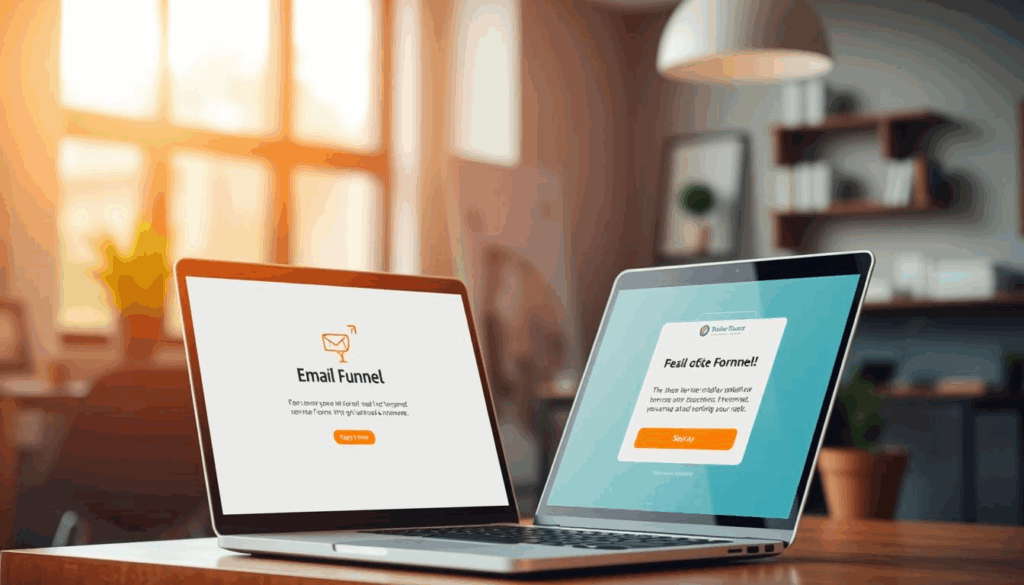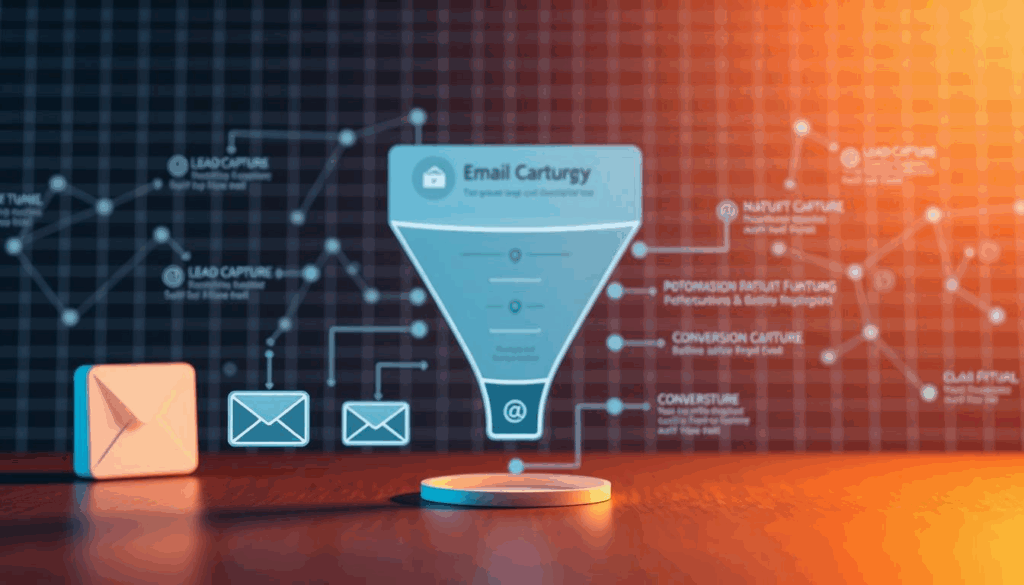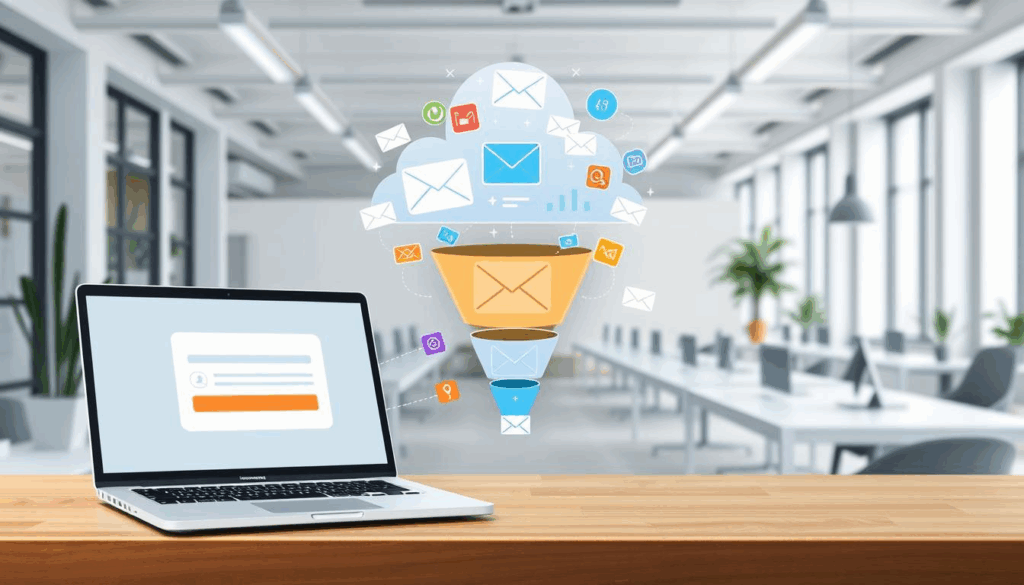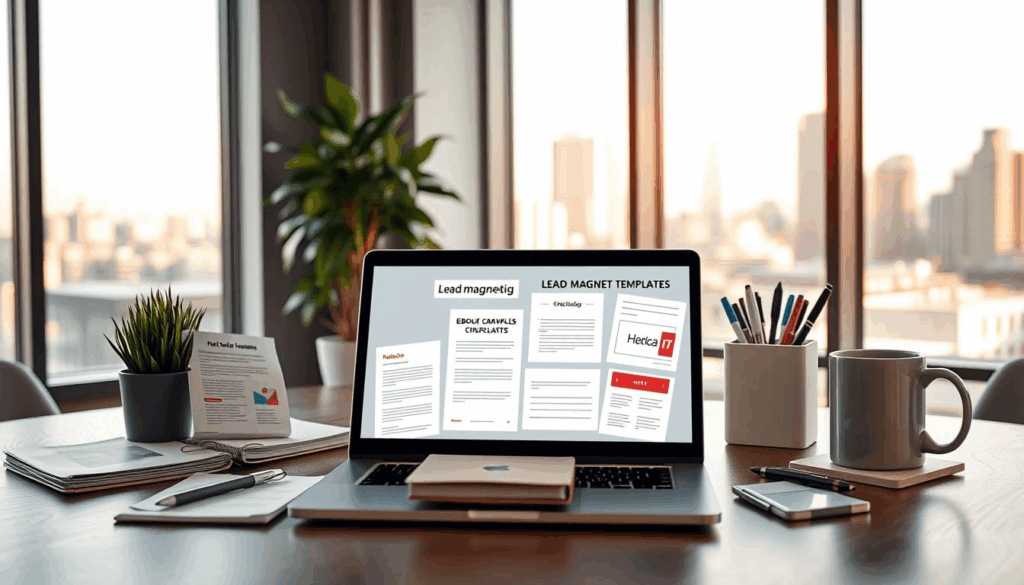As a service-based business owner, you’re likely aware of the importance of effective email marketing in driving conversions. An email funnel is a strategic marketing process. It guides potential clients through a series of steps, nurturing them until they’re ready to buy. In this guide, I’ll walk you through the process of creating an email funnel that converts for your service-based business.

A well-structured email funnel can help you increase engagement and boost sales. By understanding the key components and benefits of an email funnel, you can create a tailored marketing strategy. This strategy will resonate with your target audience.
Understanding Email Funnels for Service-Based Businesses
Email funnels are essential for a successful marketing strategy in service-based businesses. They help nurture leads and drive conversions. An effective email funnel conversion strategy is vital for maximizing ROI from marketing efforts.
What Is an Email Funnel and Why Does It Matter
An email funnel is a series of automated emails guiding potential clients through the sales process. It starts from initial awareness to conversion. To create effective email funnels, you must understand your target audience, map their customer journey, and craft emails that resonate with their needs and pain points.
How Email Funnels Differ for Service Businesses vs. E-commerce
Though email funnels share fundamental principles, their application varies between service-based businesses and e-commerce. Service businesses aim to build relationships and showcase expertise. E-commerce focuses on product promotions and sales. Grasping these differences is crucial for creating effective email funnels tailored to your business needs.

Key Components of a High-Converting Email Funnel
A high-converting email funnel includes a compelling lead magnet, a well-structured email sequence, and a clear call-to-action (CTA). The table below outlines the essential elements of a successful email funnel:
| Component | Description | Importance |
| Lead Magnet | A valuable resource that attracts potential clients | High |
| Email Sequence | A series of automated emails that nurture leads | High |
| Call-to-Action (CTA) | A clear and prominent CTA that drives conversions | High |
Understanding the key components of a high-converting email funnel and tailoring your strategy to your service-based business needs can maximize ROI and drive long-term success.
How to Build an Email Funnel that Converts for Your Service-Based Business
Creating an email funnel for your service-based business might seem complex. However, with a well-thought-out plan, you can turn leads into dedicated customers. This journey involves several essential steps. These steps help you align your marketing strategies with your audience’s preferences.
Identifying Your Service Business Goals
The initial step is to define your service business objectives. What do you aim to achieve through email marketing? Are you aiming to boost brand visibility, generate leads, or increase sales? Clear goals are essential for crafting an email funnel that resonates with your audience.
Mapping Your Customer Journey
Grasping your customer’s journey is key to a successful email funnel. You need to outline all the interactions your customers have with your brand, from the first awareness to the final sale. This insight allows you to enhance the customer experience and tailor your emails accordingly.

Selecting the Right Email Marketing Platform for Service Providers
Choosing the appropriate email marketing platform is crucial for your funnel’s success. Opt for a platform that offers automation, segmentation, and analytics. This will help you monitor your performance. Popular choices include Mailchimp, ConvertKit, and ActiveCampaign.
| Email Marketing Platform | Automation Features | Segmentation Options |
| Mailchimp | Yes | Yes |
| ConvertKit | Yes | Yes |
| ActiveCampaign | Yes | Yes |
By adhering to these guidelines and choosing the right tools, you can establish an email funnel that efficiently converts leads into clients for your service-based business.
Creating Lead Magnets That Attract Your Ideal Clients
For service-based businesses, creating effective lead magnets is crucial for capturing the attention of potential clients. A well-crafted lead magnet not only draws in ideal clients but also sets the stage for a successful email funnel.
Understanding the Types of Lead Magnets
Types of Lead Magnets That Work for Service Businesses
Service businesses can leverage various types of lead magnets to attract their ideal clients. These include:
- Checklists and templates that provide actionable advice
- Webinars and video series that showcase expertise
- E-books and guides that offer in-depth knowledge on specific topics
- Free trials or consultations that give potential clients a taste of your services
Crafting Lead Magnets That Showcase Your Expertise
To create lead magnets that truly attract ideal clients, it’s essential to showcase your expertise. This can be achieved by:
- Focusing on topics that are relevant to your target audience
- Providing valuable insights and actionable tips
- Demonstrating your unique approach or methodology

Designing Effective Opt-in Forms and Landing Pages
The design of your opt-in forms and landing pages plays a critical role in converting visitors into leads. Best practices include:
- Keeping forms short and simple
- Using compelling headlines and descriptions
- Ensuring that your landing pages are mobile-friendly and load quickly
By focusing on these elements, service businesses can create lead magnets that not only attract ideal clients but also set them up for success in their email marketing efforts.
Crafting Email Sequences That Nurture and Convert
Service-based businesses can boost lead nurturing and conversion by creating targeted email sequences. An effective email sequence is key to maximizing your email funnel’s potential. It helps build strong relationships with leads and guides them through the buyer’s journey.
The Welcome Sequence: Making a Strong First Impression
The welcome sequence is your chance to make a lasting first impression on new subscribers. It introduces your brand, provides value, and sets the tone for future communications. A well-crafted welcome sequence significantly boosts your email funnel conversion strategy.
This sequence includes a series of emails sent immediately after a lead opts-in. The content should be engaging, informative, and relevant to the lead magnet that brought them to your list.
Nurture Sequences: Building Trust and Demonstrating Authority
Nurture sequences aim to build trust and showcase your authority in your field. By offering valuable content and insights, you establish your service-based business as a thought leader. This makes your leads more likely to convert into clients.
These sequences are triggered by specific actions or inactions, like downloading a resource or abandoning a cart. The goal is to provide relevant information that addresses the lead’s needs and concerns, nurturing them toward conversion.
Sales Sequences: Converting Prospects into Service Clients
Sales sequences are where the magic happens, converting prospects into paying clients. This sequence presents your service offer in a compelling way, highlighting the benefits and value proposition.
Timing Your Service Offers
The timing of your service offers in the sales sequence is critical. You must balance providing value and making the offer. Too early, and it may seem pushy; too late, and the lead may lose interest.
Creating Compelling Calls-to-Action
A compelling call-to-action (CTA) is essential for converting leads into clients. Your CTA should be clear, direct, and actionable, guiding the lead toward the next step in the buyer’s journey. Optimizing your CTAs can significantly improve your email funnel optimization efforts.
In conclusion, crafting email sequences that nurture and convert requires a strategic approach. Understanding the different types of sequences and how to use them effectively can enhance your email funnel’s conversion rates and drive business growth.
Automating Your Email Funnel for Maximum Efficiency
Automating your email funnel is key to boosting efficiency in your service-based business. It ensures your email marketing is consistent, timely, and tailored to each recipient. This approach leads to better engagement and higher conversion rates.
Setting Up Triggers and Conditional Logic
Triggers and conditional logic form the core of an automated email funnel. Triggers start an email sequence, like when someone subscribes to a newsletter or abandons a cart. Conditional logic lets you adjust email content and flow based on subscriber actions or preferences. This setup enables a targeted and impactful email marketing strategy.
Segmenting Your List for Personalized Client Experiences
Segmenting your email list is crucial for offering personalized client experiences. By dividing your list by demographics, behavior, or preferences, you can customize content for each group. This personalization boosts engagement and makes your email marketing more effective.
Tools and Integrations to Streamline Your Service Business Workflow
Many tools and integrations can streamline your service business workflow through email automation. Leading email marketing platforms offer a variety of automation features, from basic triggers to complex workflows. Integrating these tools with your CRM or customer service software can optimize your email funnel’s efficiency.
By automating your email funnel and using the right tools and strategies, you can greatly enhance your email marketing’s efficiency and effectiveness. This leads to more conversions and growth for your service-based business.
Conclusion:
Creating an effective email funnel is only the beginning. It’s essential to continuously measure and optimize its performance for long-term success in your service-based business.
To build a converting email funnel, track key performance indicators (KPIs) like open rates, click-through rates, and conversion rates. Analyzing these metrics reveals areas for improvement in your email funnel’s effectiveness.
Optimizing your email funnel is a continuous process. It involves refining your lead magnets, email sequences, and automation triggers based on data insights. This approach enhances your email funnel’s performance and boosts client engagement.
Regularly reviewing and adjusting your email funnel strategy keeps it in line with your business goals and client needs. By following these steps and optimizing your funnel, you can unlock its full potential and drive business growth.
